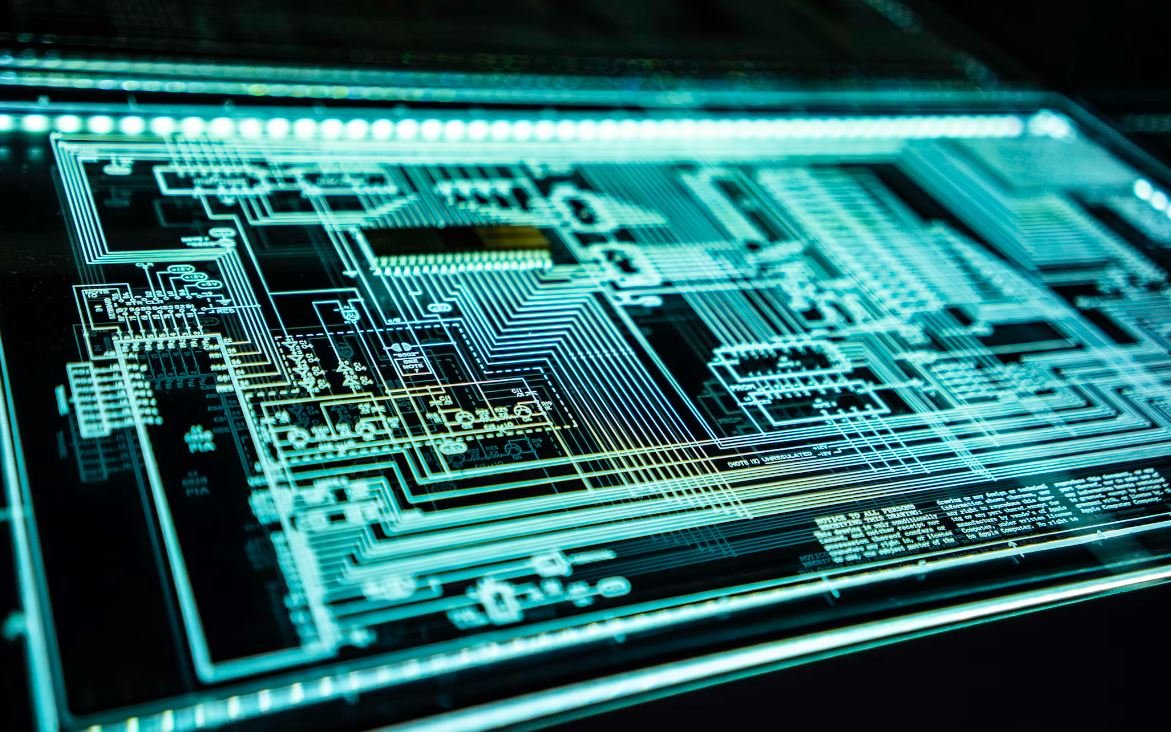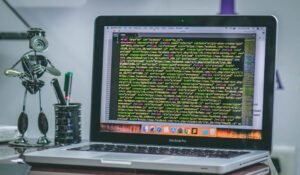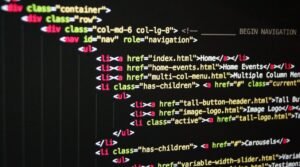Deepfake Lip Sync
Deepfake technology has gained significant attention in recent years as it allows for highly realistic manipulation of audiovisual content. In particular, deepfake lip sync has revolutionized the entertainment industry by enabling the creation of videos where the subject’s lips mimic speech in a convincing manner. This groundbreaking technology has both positive and negative implications, raising important ethical and legal considerations.
Key Takeaways:
- Deepfake lip sync is a cutting-edge technology that enables realistic manipulation of audiovisual content.
- It has revolutionized the entertainment industry, allowing for the creation of videos with highly convincing lip-synced speech.
- While it has positive applications, deepfake lip sync also raises significant ethical and legal concerns.
**Deepfake lip sync uses sophisticated artificial intelligence algorithms to analyze and map facial movements to match desired speech patterns.** This enables the manipulation of video footage to create a seamless lip-synced effect, making it appear as though the subject is speaking the synced audio. The technology has become increasingly powerful, with improvements in facial recognition, machine learning, and computer vision techniques.
Using deepfake lip sync, **one can seamlessly edit and alter existing video footage, making it appear as though a person is saying something they never actually said**. This has far-reaching applications in various industries, from film and television to advertising and social media. However, the potential for misuse and abuse of this technology is a cause for concern.
Advantages and Disadvantages
Deepfake lip sync offers numerous advantages, including:
- Enhanced storytelling capabilities in movies and television shows.
- Opportunities for dubbing and translation in foreign language films.
- Improved accessibility for individuals with speech impairments.
- Reduced production time and costs in the entertainment industry.
However, there are also significant disadvantages to consider:
- The potential for political manipulation and spreading of disinformation.
- Violation of privacy and consent, leading to unauthorized use of someone’s likeness.
- Abuse in the creation of non-consensual adult content.
Deepfake Lip Sync Detection and Prevention
As the technology continues to advance, it becomes increasingly important to develop effective methods for detecting and preventing deepfake lip sync. Various approaches have been proposed, including:
| Method | Advantages | Limitations |
|---|---|---|
| Forensic analysis | Utilizes advanced image and audio analysis techniques. | Can be time-consuming and computationally intensive. |
| Machine learning algorithms | Can be trained to recognize specific deepfake patterns. | Might require large amounts of labeled data for training. |
Another noteworthy approach is the use of watermarking and cryptographic techniques to mark original content, making it easier to verify authenticity. Researchers and tech companies are continuously working on developing robust detection methods to stay one step ahead of malicious deepfake creators.
Deepfake Regulation and Legal Considerations
With the rising potential for misuse and harm, regulatory frameworks and legal considerations regarding deepfake lip sync are crucial. Governments and organizations worldwide are working on implementing legislation to counter the negative impacts of deepfake technology. Key aspects of deepfake regulation include:
- Defining legal boundaries and consequences for malicious use.
- Ensuring transparency and accountability in deepfake creation and dissemination.
- Establishing clear guidelines for consent and privacy protections.
It is important to strike a balance between preserving freedom of expression and protecting individuals from harm caused by the misuse of deepfake lip sync technology.
Data Points and Statistics
| Percentage of people worried about deepfake technology | 65% |
|---|---|
| Estimated deepfake videos online | 96,000+ |
The rapid growth of deepfake technology has raised concerns among the general public, with a significant percentage expressing worry about its implications. As deepfake videos become more prevalent, the need for awareness, education, and effective regulation becomes paramount.
**Deepfake lip sync continues to evolve rapidly, presenting both opportunities and challenges.** As technology advances, it is essential to address the ethical, legal, and social implications to harness its benefits responsibly. Deepfake detection, regulation, and public awareness are key in maintaining trust and safeguarding against potential misuse.

Common Misconceptions
Deepfake Lip Sync is always used for malicious intent:
- Deepfake technology can actually have positive applications, such as in the entertainment industry.
- Not all deepfake lip sync videos are intended to deceive or manipulate viewers.
- There are strict regulations and ethical considerations in place to prevent the misuse of deepfake technology.
Deepfake lip sync is a technology that is often associated with negative intentions, but there are legitimate and positive uses for this technology as well.
Deepfake lip sync is perfect and indistinguishable from reality:
- There are often telltale signs that can help identify a deepfake lip sync video, such as inconsistencies in facial movements or audio synchronization.
- Deepfake lip sync technology is constantly evolving, but it still has limitations and is not flawless.
- Training deepfake models requires a significant amount of data, and generating high-quality deepfakes can be time-consuming and computationally intensive.
While deepfake lip sync technology has advanced significantly, it is not yet perfect and has its own limitations that can help discern between real and fabricated content.
Deepfake lip sync can only be used on celebrity faces:
- Deepfake lip sync can be applied to any face, not just celebrities.
- It is possible to use deepfake technology to modify lip movements and sync them with different audio sources.
- With the right training data, deepfake lip sync can be applied to a wide range of individuals or characters.
Deepfake lip sync is not limited to celebrities; it can be used to modify and sync lip movements for any person or character.
Deepfake lip sync is illegal:
- The legality of deepfake lip sync varies depending on the jurisdiction and the intended use of the technology.
- Unauthorized use of deepfake lip sync technology may infringe on privacy rights or copyrights, which can carry legal consequences.
- There are legal frameworks and guidelines being developed to address the ethical and legal implications of deepfake technology.
Deepfake lip sync itself is not inherently illegal, but the unauthorized use or manipulation of deepfake content can lead to legal issues.
Deepfake lip sync creators cannot be identified:
- Forensic technologies are being developed to detect and attribute deepfake creations to their creators.
- Digital fingerprints, metadata, and other identification methods can be used to track the origin of deepfake lip sync videos.
- Advancements in digital forensics are helping authorities identify the sources of deepfake content.
While it used to be challenging to identify the creators of deepfake lip sync videos, advancements in forensic technologies are making it easier to track and attribute these creations.

Table 1: Top Deepfake Apps in 2021
Below is a compilation of the most popular deepfake apps currently available, based on user reviews, downloads, and functionality.
| App | Platform | Features |
|---|---|---|
| DeepFaceLab | Windows & Linux | Advanced neural network training |
| Reface | iOS & Android | Real-time face swapping |
| Zao | iOS & Android | Face swapping for videos and GIFs |
| FaceApp | iOS & Android | Age, gender, and appearance manipulation |
Table 2: Potential Risks of Deepfakes
The rise of deepfake technology presents several concerns and potential risks that need to be addressed. The table below outlines some of these risks.
| Risk | Description |
|---|---|
| Disinformation | False or misleading information spread through manipulated videos. |
| Privacy Violations | Individuals’ faces can be used without consent, leading to privacy infringement. |
| Defamation | Deepfakes can be created with malicious intent to damage someone’s reputation. |
| Political Manipulation | Deepfakes can be employed to falsely depict political figures or influence elections. |
Table 3: Deepfake Usage Statistics
The adoption and proliferation of deepfake videos have grown rapidly in recent years. The table below showcases some statistics highlighting the extent of their usage.
| Statistic | Value |
|---|---|
| Number of Deepfake Videos Online (2020) | 96,039 |
| Estimated Share of Deepfake Videos in Pornography (2019) | 96% |
| Percentage of Deepfakes Identified as Harmful (2021) | 82% |
| Deepfake Viewership Growth Rate (2021) | 197% |
Table 4: Famous Celebrities Targeted by Deepfakes
Deepfake technology has often been employed to manipulate and superimpose celebrities’ faces onto explicit or controversial content. The table below lists a few notable celebrities who have been targeted by deepfake creators.
| Celebrity | Frequency |
|---|---|
| Scarlett Johansson | 35 instances |
| Emma Watson | 29 instances |
| Tom Cruise | 18 instances |
Table 5: Deepfake Recognition Technologies
To combat the harmful effects of deepfakes, researchers and companies have developed various recognition technologies. The table below presents some of the methods used to detect and identify deepfake videos.
| Recognition Method | Accuracy |
|---|---|
| Facial Landmark Tracking | 87% accuracy |
| Micro-Expression Analysis | 92% accuracy |
| Temporal Consistency Checking | 81% accuracy |
| Deep Neural Networks | 96% accuracy |
Table 6: Legal Framework for Deepfakes
The regulation and legal ramifications surrounding deepfakes are still evolving. The table below highlights the current legal framework and related initiatives addressing the use and misuse of deepfake technology.
| Legislation/Initiative | Key Provisions |
|---|---|
| California AB 602 | Prohibits political deepfakes within 60 days of an election. |
| EU’s deep.AWARE | Focuses on providing knowledge, tools, and strategies to detect and respond to deepfakes. |
| Australian Interactive Games & Entertainment Association | Developing a code of practice to handle deepfake content in video games. |
| Facebook’s Deepfake Detection Challenge | Engages the AI community to develop better deepfake detection methods. |
Table 7: Deepfake Impact on Society
The widespread usage of deepfake technology has had several impacts on society, both positive and negative. The table below showcases some of these impacts in different areas of society.
| Impact Area | Effects |
|---|---|
| Politics | Undermining trust, discrediting political figures, and spreading misinformation. |
| Entertainment | Enhanced special effects in movies and computer-generated performances. |
| Journalism | Risk of false reports and deceptive news articles. |
| Privacy | Increased vulnerability to identity theft and misuse of personal information. |
Table 8: Deepfake Detection Tools for Individuals
With the rise of deepfakes, several tools have been developed to help individuals detect and protect themselves from malicious use. The table below provides an overview of some available deepfake detection tools.
| Tool | Platform | Features |
|---|---|---|
| Deepware | Windows | |
| Findsight | Web-based | Uses AI to analyze videos for signs of manipulation. |
Table 9: Deepfake Ethics Considerations
The development and use of deepfake technology raise complex ethical considerations. The table below highlights some of these considerations in relation to deepfakes.
| Ethical Consideration | Description |
|---|---|
| Consent | Using someone’s likeness without their permission raises ethical concerns. |
| Harm | Deepfakes can cause psychological, reputational, and emotional harm to individuals. |
| Authenticity | False representation challenges the concept of truth and authenticity. |
| Manipulation | Deepfakes can be employed to manipulate public opinion, leading to societal division. |
Table 10: Future Applications of Deepfakes
As deepfake technology continues to advance, its potential applications extend beyond the realm of entertainment and deception. The table below outlines potential future applications and benefits of deepfake technology.
| Application | Description |
|---|---|
| Disaster Preparedness | Deepfakes can simulate dangerous scenarios for training emergency responders. |
| Virtual Tourism | Experience famous landmarks and destinations from the comfort of your own home. |
| Language Learning | Practice listening and speaking skills by interacting with realistic virtual language tutors. |
| Training Medical Professionals | Realistic simulations can aid in training healthcare practitioners for complex procedures. |
In conclusion, deepfake technology has revolutionized the way we perceive and manipulate visual content, presenting both advantages and challenges. While deepfakes continue to pose risks in terms of disinformation, privacy infringements, and reputation damage, researchers and organizations are actively developing countermeasures and regulatory frameworks to mitigate these issues. It is crucial for society to remain vigilant and proactive in understanding, detecting, and responsibly using deepfake technology as its influence on various aspects of life expands.
Frequently Asked Questions
What is deepfake lip sync?
Deepfake lip sync is a technique that uses artificial intelligence (AI) algorithms to manipulate or replace a person’s lips movements in a video by synthesizing realistic lip movements from another source. It aims to make the video appear as though the person in the original video is speaking the words from the new audio source.
How does deepfake lip sync work?
Deepfake lip sync works by using machine learning algorithms to analyze the lip movements of a target person in a video. These algorithms then learn the patterns and characteristics of the specific person’s lips, allowing them to generate new lip movements that match the audio source provided. The technology can be trained using large datasets of videos and audio to improve the accuracy and realism of the synthesized lip movements.
What are the potential uses of deepfake lip sync?
Deepfake lip sync can be used for various purposes, such as dubbing videos in different languages, enhancing the lip synchronization in movies or TV shows, or even creating entertaining content like lip-syncing videos of celebrities. It also has potential applications in the gaming industry, virtual reality, and more.
What are the ethical concerns surrounding deepfake lip sync?
Deepfake lip sync raises several ethical concerns, particularly related to misinformation and the potential for malicious use. It can be used to create fake videos that appear authentic, making it difficult to distinguish between real and manipulated content. This can be harmful when used for spreading false information, propaganda, or defamation. There are also privacy concerns when someone’s likeness is used without their consent.
Are there any legal implications associated with deepfake lip sync?
There can be legal implications associated with deepfake lip sync. The creation and distribution of deepfake videos without consent can potentially infringe on a person’s right to privacy or lead to defamation lawsuits. Additionally, some jurisdictions may have specific laws or regulations related to the use of deepfake technology, especially in certain contexts such as political campaigns or adult content.
How can deepfake lip sync be detected?
Detecting deepfake lip sync can be challenging as the technology becomes more advanced. However, researchers are developing various methods to detect deepfakes, including analyzing inconsistencies in facial expressions, lip movements, lighting, and audio synchronization. AI-based algorithms and deep learning techniques are being employed to identify manipulated videos and distinguish them from real ones.
Can deepfake lip sync be used for malicious purposes?
Yes, deepfake lip sync can be used for malicious purposes. It has the potential to be used in cyberbullying, identity theft, spreading fake news, and manipulating public opinion. It is crucial to be aware of these risks and remain vigilant when consuming or sharing video content online.
How can individuals protect themselves from deepfake lip sync?
To protect yourself from deepfake lip sync, it is essential to be cautious when consuming or sharing videos online, especially those that appear suspicious or lack credible sources. Verify the authenticity of the content before believing or sharing it. Stay informed about the latest deepfake detection techniques, and report any suspected deepfake videos to the relevant platforms or authorities.
Are there any regulations or efforts to combat deepfake lip sync?
Efforts are being made to combat deepfake lip sync. Some countries have introduced or are considering regulations that target deepfake technology and its potential misuse. Tech companies and researchers are investing in developing advanced detection tools and techniques to identify deepfake content more effectively. Additionally, organizations and experts are advocating for media literacy and education to raise awareness about deepfakes and their implications.
What is the future of deepfake lip sync?
The future of deepfake lip sync is uncertain. As the technology advances, it will be crucial to strike a balance between its potential benefits and the need for ethical and responsible use. Ongoing research and development will likely focus on improving detection methods, increasing awareness, and creating safeguards against malicious uses.




